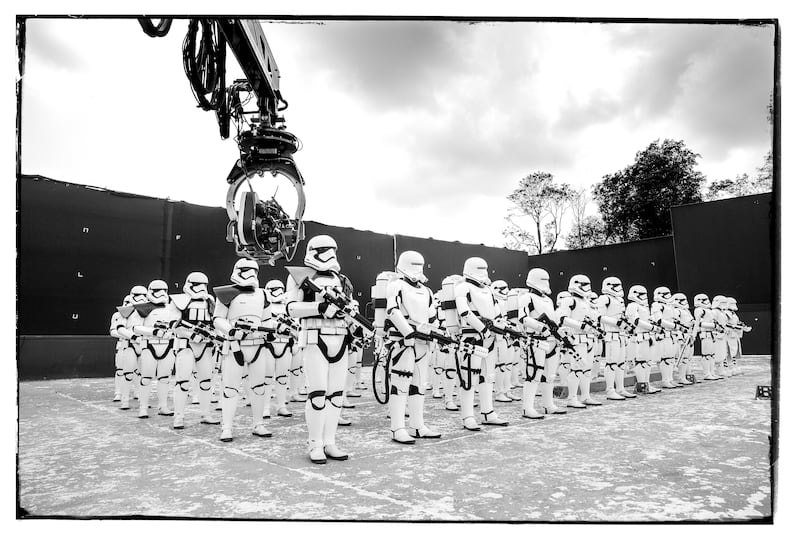There’s a gentle irony in the fact that the images we often associate with films are actually static. While film, be it digital or celluloid, whirrs past at 24 frames per second, it’s the snapshot images that stay with us. Whether it’s Harrison Ford stroking a stubbled chin as he ponders a golden idol, or Darth Vader, half-hidden in the darkness, glowing red lightsaber at the ready, the motion of the pictures stops for a moment, snatched from the film to settle in our minds.
Someone, obviously, has to take those photos, and one of the greats is David James. His official title is on-set still photographer, but that doesn’t do justice to his work. Think of the truly iconic images from films over the past several decades, whether it be Tom Hanks’s khaki-clad warriors waiting aboard a landing craft in Saving Private Ryan, or Tom Cruise perched vertiginously atop the tallest building in the world, and those photos were taken by James.
“It was just born into me, by some fluke. My mum wasn’t into taking photos, nor was my dad,” James says as he prepares to come and give at talk at Belfast’s Rendr festival. “They did buy me a Box Brownie camera for Christmas, though. I loved that. I loved taking the photos and developing them in the bathroom. That used to annoy my mum and my brothers, as our house only had one bathroom. Dad didn’t mind, though: he was usually in there helping me.”
The journey from taking family snaps with a basic camera to squeezing in beneath Steven Spielberg’s director’s chair to get the right shot seems like a huge one, but for James it all started because he was late for school.
READ MORE
“Our bus couldn’t drop us off at school one morning because the street was all blocked off. MGM was shooting a film with Rita Hayworth, and they were setting up these massive arc lights and cameras – it was a really big deal. I asked permission to go out to the toilet from class about a hundred times that day, just so I could peep over the wall at what was happening.”
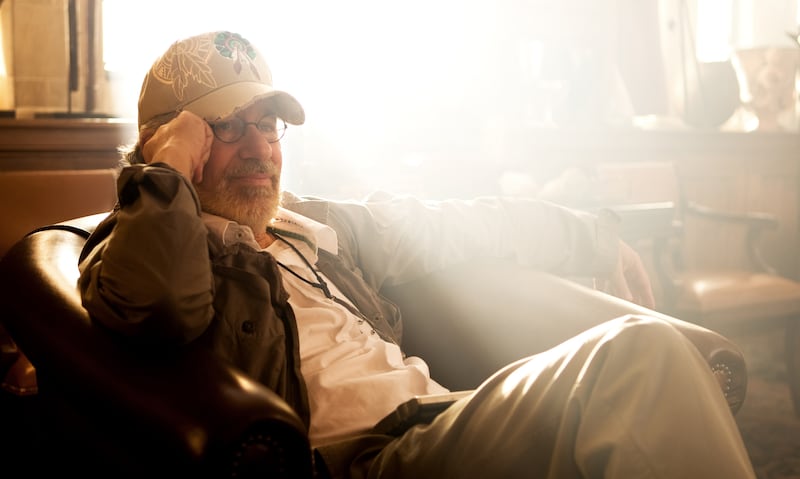
The Hollywood bug had well and truly bitten, but going from schoolboy to MGM took a giant leap of faith. James left school at 15, and tried to apply for an apprenticeship at MGM’s UK headquarters, in Borehamwood in Essex. He was repeatedly rebuffed, with the studio telling him he had to be in a union to get work but the union telling him he had to get work before he could join. Distraught, James stopped at a pub owned by his uncle, where a little underage shandy was overlooked.
“One of the seats at the bar was kept for an old guy called Tommy – always sat there with his coat and his trilby hat, having a couple of pints after work. He asked me why I was there, why I wasn’t out with my mates, and I told him my sob story about being rejected from MGM. He said, ‘Maybe I can give you a bit of wisdom some time,’ and gave me his phone number.
“I went back to my job on the Monday morning, doing drafting work for a company that designed milk floats and supermarket shelving. I hated it, but I found Tommy’s number in my pocket and rang it. Someone picked up and said, ‘MGM photo department’. I gave them my name, and she said, ‘We have an interview organised for you at 10 o’clock tomorrow.’ So that’s how I got in, in the end.”
This was 1956, and MGM was at its peak, turning out hugely expensive films, often musicals, with stars such as Fred Astaire, Gene Kelly, Joan Crawford and, of course, Rita Hayworth. James could hardly have picked a greater place to learn his trade. “I was still a junior, and hanging around on set to help the likes of Bob Elkins, who was a Life magazine photographer. Once, there were all these big lights with orange filters on them, and I wondered what they were for. So Bob says, ‘Why don’t we just ask?’ He goes up to the cinematographer, Freddie Young, one of the best ever, who did Doctor Zhivago, among many others, chats to me, and when I ask him about the filters, he gives the order to turn off all the lights. And then one by one, from the back forwards, he turns them back on, and every light that came on, he told me what it was doing. And as he started putting the filter back in place, it was like painting a picture with light.”
We need to jump forward somewhat here, because among James’ most fascinating stories are more recent adventures with Spielberg and Tom Cruise. James has worked with Spielberg on almost a dozen films, starting, you might say, at the deep end, with Schindler’s List, from 1993.
“On the first day we were on the set of the concentration camp that had been built for the film, and Steven pulls me aside and says, ‘Wherever I go on this set I’ve got 15 people following me. Wherever you go, you go on your own. So you are my second pair of eyes on the set. If you see something I haven’t seen, or I haven’t had a chance to get to, come and tell me.’”
There surely aren’t many people who can walk up to Spielberg and start pointing out camera angles, but James is one of them.
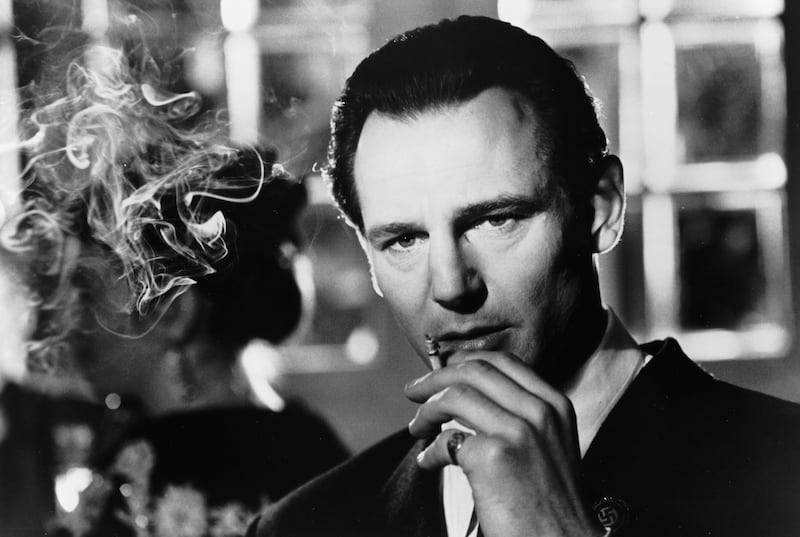
That relationship reached its apotheosis on a Co Wexford beach in 1997. Curracloe Beach was, famously, standing in for Normandy’s Omaha Beach for the filming of Saving Private Ryan. The harrowing opening few minutes, depicting the bloody battle for the beach during the opening assault of the D-Day landings, has gone down in film history, but Spielberg was relying on James to help him shoot an incredibly complex sequence.
“Normally, Steven arrives on set and – boom – he knows what he’s shooting and he knows what he wants, and he gets on with it. But one morning on Ryan, Steven’s on the beach and he’s walking back and forth, and everyone’s ‘What’s happening? Steven’s normally straight out of the car and on to it.’ He comes over to me and says, ‘Have you got anything? Any slides? Anything I can look at from the previous few days?’ So I run and get what I’ve shot – still on slides then, not digital – and after a few minutes looking at them he’s got it, and he’s ‘Here’s what we’re going to do.’ Those are the magic moments for me, because they’re the times when you get to know you’re contributing to the movie – you’re not just there to shoot pictures.”
There’s a lovely circularity, too, as James cites the great photographer Robert Capa as one of his influences, and it was Capa’s famously damaged and blurry photos of the D-Day landings that inspired Spielberg’s direction of Saving Private Ryan, which has gone on to influence pretty much every major war film since. “Capa stopped worrying about the technicalities,” James says. “Is there dirt on the lens? Fine, leave it there. He said that the first thing you have to understand about war photography is that it’s all about bums and elbows – you never get a clean photo of someone posing.”
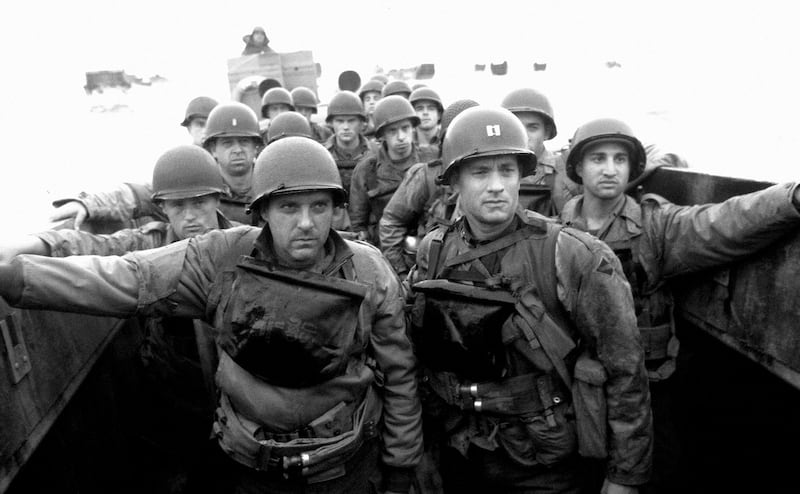
A clean photo of someone posing is exactly what forms arguably James’ most famous image, but it’s as much about where that person is posing. Or, more accurately, at what altitude they’re posing. In Dubai, to film Mission Impossible: Ghost Protocol, James decided to give the famously gung-ho Tom Cruise a challenge. “I said every time they talk about Mission: Impossible they get out the shot of you horizontal in the air from the first film, and I said that it’s like you’ve done nothing else in any of the other films. I said I want to do a picture of you that no one’s ever shot before – and no one will ever likely shoot again. A one-off. And he says, what will it be? And I say, I’ve no idea, but I’ll know it when I see it.”
On set, the two men were standing at the ground floor of the towering Burj Khalifa, the tallest building in the world and the set of a hair-raising stunt in the film. “I look up and I nudge him, and he looks at me, and he looks up with me. And he grins and he punches me in the shoulder and says, ‘You’ve got it.’”
What they’d got was a plan to send Cruise to the very precipitous peak of the building, and perch him on top of the tallest part, which involved climbing up a ladder through a narrow tube inside the tower’s antenna, and emerging on to a point where there’s just about enough room for Cruise to park his million-dollar backside, more than 160 floors up.
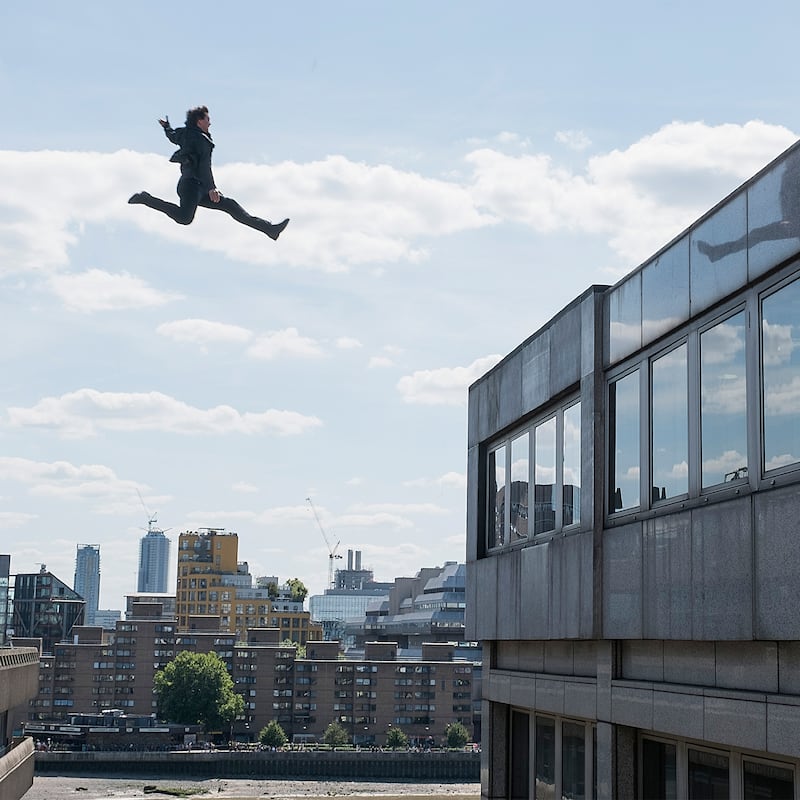
“I was at the airport, waiting for the call in a helicopter with the door taken off. We had to be really careful to do it right, because I wanted to make sure that no one could have said we’d faked it. There’s actually some graffiti on the tower at the top, which I haven’t edited out because I want to keep that file pristine. The only thing we did is to make sure that Tom had tucked the safety line behind him so that it looks as if he’s up there with nothing.”
As James points out, the image has nothing directly to do with the film, as it’s not part of the script and not the part of the building where the on-screen action takes place. “But that is a one-time historic picture. And Jay Leno has it on his show. You have to figure out what’s the value by minute of having a talk about your movie on the Jay Leno show. If you added up the minutes before the break and after the break, it was worth a fortune to the studio.”
A still image selling moving ones. Irony, but also artistry.
David James will speak at the Rendr festival this weekend
